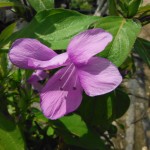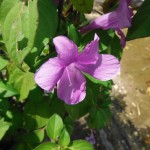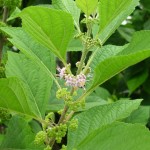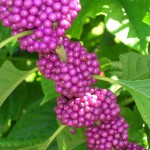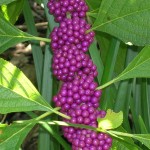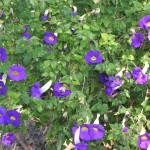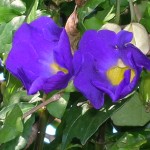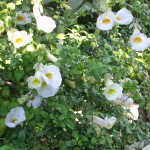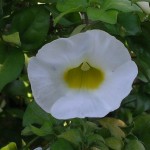Looking for Shady Friends? Part II
Continuing last week’s feature, we recommend three more species that flower dependably in settings where lighting is muted:
Philippine Violet (Barleria cristata): Okay, class, our topic this hour is “Misnomers of the Plant World, or What Not to Like About Common Names.” Accordingly, we consider Barleria cristata, commonly known as the Philippine Violet. The problem is that it’s not a violet, and it’s not from the Philippines. Instead, it’s a member of the Acanthaceae family, which includes Aphelandra, Sanchezia and Thunbergia. And it’s native from southern China into India and Burma (Myanmar). We’ll pretend not to notice that Burma has its own problem with names. What’s certain about B. cristata is that it is a very nice short-day species, meaning that it blooms in the winter. The funnel-shaped flowers occupy a color range from purplish-blue lavender to pink to white, roughly 1″ in. wide and 2″ long. The plant matures at 3-5 ft. high by 3-5 ft. wide. This species responds well to ample irrigation, periodic pruning, and regular fertilizing, and it generally does not suffer from pest problems.
American Beautyberry (Callicarpa americana): Beautyberry is a very hardy species, native in the U.S. in a broad swath from Virginia to Arkansas and eastern Texas. It thrives in moist settings, whether woods, bottomlands or the fringes of swamps. Like Philippine Violet, it matures in the 3-5 ft. range, but it can reach 9 ft. under ideal conditions.
While the pink clustering flowers of C. americana are nice enough, it is the fruits of this species which really make it stand out. The glossy purple berries, which appear in July-October, are held in clusters along the leaf stems of the plant. At least one observer has likened the clusters to bracelets. American Beautyberry planted in masses adds vibrant color to the shady areas of a garden. In colder parts of the plant’s range, the fruits persist after the leaves have fallen off. Incidentally, the crushed leaves of C. americana contain chemical compounds that hold promise as repellents to mosquitoes and other biting insects.
Bush Clock Vine or King’s Mantle (Thunbergia erecta): There’s yet another plant recommendation that adds color on the purple side of the palette to the parts of your garden where lighting is muted. Thunbergia erecta, a native of western Africa, is a woody shrub that reaches about 6 ft. high and wide. Bearing small, glossy green leaves, it produces tubular yellow-throated, deep purple flowers 2-3 in. across which may appear singly or in clusters. In addition to their beauty, the blooms are also mildly fragrant. Flowering occurs throughout the year, but most profusely in summer months. The fast-growing Bush Clock Vine — ‘vine’ being a misnomer borrowed from this species’ climbing relatives — makes an outstanding hedge for foundation plantings or borders. Left to its own devices, it will develop a sprawling habit, but it is very amenable to pruning. This desirable plant is also seldom affected by insect pests.
All of these species are available in containers at Richard Lyons’ Nursery, 20200 SW 134th Ave. Miami, FL
